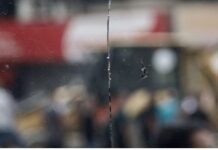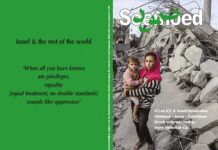Vijay Prashad
CounterPunch / August 16, 2024
It is almost as if the Israeli army is trying to gather as many Palestinians as possible in one place and then kill them all. Ahmed Abed and his family fled the Dalal al-Maghribi school in early August after an Israeli airstrike displaced them.
That airstrike killed 15 Palestinians who had taken refuge there after Israel had bombed their homes in the Ash-Shujaiyeh neighborhood of Gaza City. The family arrived at Al-Taba’een school, a private school with an attached mosque, that sheltered 2,500 people. Since the Israelis began their most recent bombardment of Gaza in October 2023, Palestinians have taken refuge in private schools and in schools run by the United Nations (UN). The UN reports that in the Gaza Strip, the Israeli attacks have damaged 190 of their facilities, most of them schools.
There are few sanctuaries left in Gaza. These schools—whether private or UN—are the only places that were seen as relatively safe.
At 4:30 a.m. on August 10, Israeli jet fighters flew over Gaza City and dropped U.S.-made GBU-39 250-pound bombs on Al-Taba’een school and mosque. During that time, a large number of the inhabitants had lined up at the mosque to go for the Fajr or dawn prayer. The bombs hit the people near the mosque, killing at least 100 Palestinians. It is a grotesque massacre that took place just when the United States decided to rearm Israel with these kinds of weapons. Sarah Leah Whitson, former Middle East and North Africa division director for Human Rights Watch, wrote that the arms sales to Israel by the United States on the day of this bombardment demonstrated a “Pavlovian conditioning for a feral army.”
The United States, despite occasional statements about withholding weapons, has consistently armed Israel during this genocidal war. Since 1948, the United States has provided $130 billion worth of weapons to Israel. Between 2018 and 2022, 79 percent of all weapons sold to Israel came from the United States (the next was Germany, which supplied 20 percent of Israel’s arms imports). The U.S. arms sales have come in deliberately small bunches of under $25 million per sale so that they do not require the scrutiny of the U.S. Congress, and therefore public debate. From October 2023 through March, the U.S. approved 100 of these small sales, which amount to over $1 billion in weapons sales, including the GBU-39. It is important to know that the bomb, created in the United States, was likely loaded onto an Israeli fighter jet by a U.S. technician seconded to the Israeli bases.
A pattern of targeting schools
Mahmoud Basal, the spokesperson for Gaza’s civil defense unit, said that the medics who got to the scene at Al-Taba’een school, many of them already veterans of this kind of violence, were confounded by what they found. “The school area is strewn with dead bodies and body parts,” he said. “It is very difficult for paramedics to identify a whole dead body. There’s an arm here, a leg there. Bodies are ripped to pieces. Medical teams stand helpless before this horrific scene.” At least 40,000 Palestinians have been killed by the Israeli bombings since last October, and 2 million Palestinians have been displaced from their homes.
In the lead-up to the attack on Al-Taba’een school, the Israeli forces have been escalating their bombings of schools in Gaza that serve as shelters. In July, the Israeli military struck 17 schools in Gaza, killing at least 163 Palestinians. In the week before August 10, Israel hit the Khadija and Ahmad al-Kurd schools in Deir al-Balah killing 30 Palestinians (July 27), the Dalal Moghrabi school in Ash-Shujaiyeh killing 15 Palestinians (August 1), the Hamama and Huda schools in Sheikh Radwan killing sixteen Palestinians (August 3), the Hassan Salame and Nasser schools in al-Nassr killing 25 Palestinians (August 4), and Al-Zahraa and Abdul Fattah Hamouda schools killing 17 Palestinians (August 8).
This sequence of attacks on schools came before the August 10 bombing, which shows that there is a pattern of targeting civilians who are seeking shelter in schools. The massacre at Al-Taba’een is the 21st attack by Israel against a school that has been serving as a shelter since July 4. Ahmed Abed lost his brother-in-law Abdullah al-Arair in the massacre at Al-Taba’een. “There is nowhere else to go,” he said. “Every place in Gaza is a target.”
Israeli denials
Israel accepted that it had bombed these schools but denied that it had killed civilians. In fact, Israel no longer names these places such as al-Taba’een and Dalal Moghrabi as schools; it calls them “military facilities.” The Israeli military said that it had killed at least 20 “terror operatives” since it is reported to have claimed to have hit an “‘active’ Hamas and Palestinian Islamic Jihad command room embedded within a mosque.” The Israeli authorities released the names of at least 19 people who they claimed were senior operatives of Hamas and Islamic Jihad.
The EuroMed Human Rights Monitor, an independent organization based in Switzerland, studied the claims made by Israel’s military and found them to be factually wanting. The Monitor’s staff went to the school, did a survey of the survivors, and reviewed the Israeli-controlled civil registry for the names. The team’s “preliminary investigation found that the Israeli army used names of Palestinians killed in Israeli raids—some of whom were killed in earlier raids—in its list.” The three people killed earlier, but whose names appeared in the Israeli lists, include Ahmed Ihab al-Jaabari (killed on December 5, 2023), Youssef al-Wadiyya (killed on August 8, 2024), and Montaser Daher (killed on August 9, 2024). The Israeli list also had three elderly civilians who have no connection to any militant group, including Abdul Aziz Misbah al-Kafarna (a school principal) and Yousef Kahlout (an Arabic language teacher and deputy mayor of Beit Hanoun). The list also includes six civilians, “some of whom were even Hamas opponents.”
It is remarkable that even in their own statements the Israeli officials seem unsure about their claims. Rear Admiral Daniel Hagari of the Israeli military said that “various intelligence indications” show that there was a “high probability” that Ashraf Juda, a commander of the Islamic Jihad’s Central Camps Brigade, was in Al-Taba’een school. But the Israelis could not confirm it. So, the Israelis killed 100 civilians even though they were not certain if their target was in the facility at that time.
The Israeli army has set up a pattern for its genocidal campaign. It first bombs civilian neighborhoods, sending terrified people into shelters such as schools and hospitals. Then, it announces blanket evacuation orders from an entire area, forcing people in these shelters to live in fear since many of them do not have the wherewithal to leave them for other places (indeed, “There is nowhere else to go,” said Ahmed Abed). Having made these evacuation orders, Israel then bombs the protected shelters, including hospitals and schools, with the argument that these are military targets. This formula was enacted in Gaza City and in other parts of Gaza.
Now, Israel has announced forced evacuation orders for people in Khan Younis, a city in central Gaza. Alongside these orders, Israeli forces have begun aerial and artillery attacks at the eastern edge of Khan Younis. We will now see these kinds of attacks on schools and hospitals that are shelters for desperate people in the center of Gaza, with every building seen by the Israelis as a legitimate target.
Vijay Prashad’s most recent book (with Noam Chomsky) is The Withdrawal: Iraq, Libya, Afghanistan and the Fragility of US Power (New Press, August 2022)












